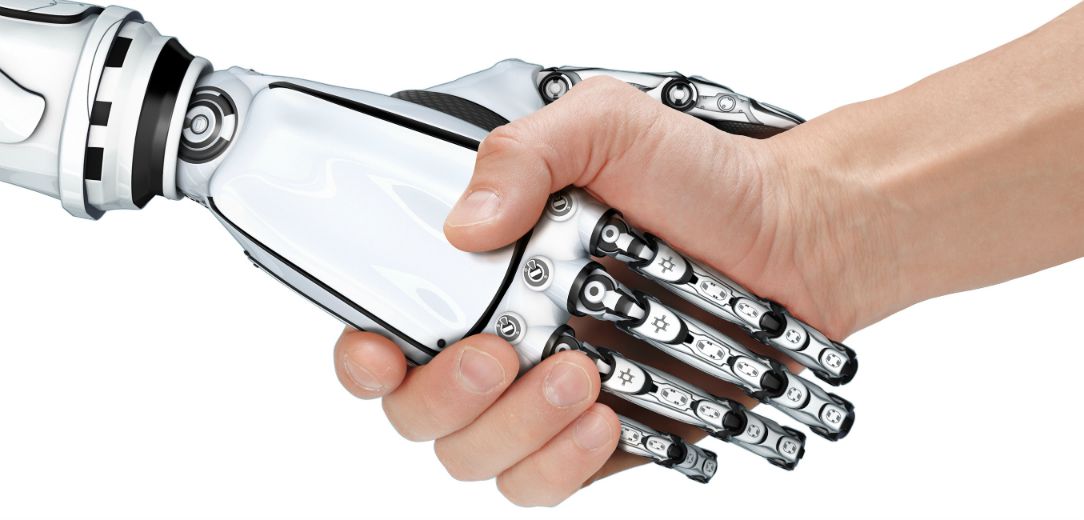Recently there’s been media debate on advances in artificial intelligence (AI) and robots taking away jobs in different industries. Much of this fearmongering, however, is unwarranted. This is because specific AI and robotic developments are being made to aid and assist humans in better performing their jobs or eliminating mundane, repetitive tasks, not take away their holistic jobs.
Companies like Leadspace are employing AI in their Audience Management Platform. It can process thousands to millions of leads efficiently that would be difficult for humans to calculate manually.
AI is making a significant impact in the service and marketing industries. SoftBank has staffed its Tokyo mobile phone stores with robot sales associates named Pepper for routine sales and service FAQs. Pepper has a chest-mounted tablet, which lets customers enter their information to access their accounts. It moves freely using multi-directional wheels and uses cameras to identify movements and recognize emotions on customer faces. Pepper is intended to become a genuine daily companion slash ideal salesperson or personal assistant for routine tasks. SoftBank has more than 10,000 Peppers working in SoftBank mobile stores, cruise ships, homes, and Pizza Hut stores.
Why AI and Robots Make People so Anxious?
MIT researchers Erik Brynjolfsson and Andrew McAfee describe the current period as the “second machine age,” where automated machines do routine work in sales, manufacturing, food prep, and bookkeeping. Researchers from the University of Oxford predict that half of the jobs in the US could be automated in the next 20 years. Continuing advancements in deep learning and related AI technologies keep pushing the industry to adopt solutions that increase efficiency and remove redundancy. Some voices in Silicon Valley are clamoring for a universal basic income that will support citizens once robots or AI have taken their jobs.
This, however, is one side of the story, often based on perceptions and opinions carved out of a narrow narrative. They don’t actually prove that AI will make humans obsolete in the labor force. Another side to the story, the one based on solid numbers and facts, paints a much-brighter picture of the future.
Numbers Don’t Lie
Some forecasts claim that automation will soon replace human labor. These predictions, however, fail to take into account the technology’s developmental stages and how fast industries would adopt advanced automation. Industrial revolutions 1 – 3 and the rise of computers, including ATMs have removed the need for some task-oriented jobs, but these technologies also created new ones. And although the U.S. has over 400,000 ATMs, the number of bank tellers increased between the year 2000 and 2010. More ATMs reduced the foot traffic in branches, but also made opening the branches cheaper, allowing banks to open more branches. This resulted in overall increase in the number of bank tellers.
Productivity is an objective measure in predicting the future of human labor. Automation would enable more companies to hire fewer people and provide higher productivity growth. But in the last decade, productivity gains have been low—so low that its pace matches the period after World War II. From 1947 to 1973, the U.S. economy’s labor productivity increased at nearly 3 percent annually on average. But the last two years have only seen a 0.6 percent growth. If robots and other technologies are really able to drive productivity, a higher number should be reported.
The decrease could be from humans moving on to service jobs. But the measure of productivity in manufacturing has also been low. Economist Dean Baker at the Center for Economic and Policy Research says that you can’t see the difference automation is making in factories in aggregate numbers.
Technology is Not Taking Over
The labor force need not worry about AI advancement and robotic technology. The below-5-percent unemployment rate is from labor shortages and not from labor surpluses. More Americans are returning to the labor force, and their wages have increased with the labor market’s improvements. The increases are rather low but they’re still increasing faster than productivity rates. This wouldn’t be the case if technology were taking over labor force.
A job churn would have also occurred if AI were stealing human jobs. You would expect more individuals to move from different companies or industries, but the numbers show otherwise. The job churn is just at 38 percent of the level seen between 1950 and 2000, when technology was still developing over time. The Internet had also yet to reach its peak during this time. Median job tenure has actually lengthened since 2000, indicating that the workforce has experienced more stability than previous decades.
Robots Just Cannot Match Human Capabilities
Human beings also have a clear advantage over AI-based robots and systems—being humans. It’s true that deep learning can enable robots and technologies to sift through large volumes of data to identify patterns. But these technologies won’t be able to troubleshoot holistic problems with many real-life variables. They can’t originate new ideas that’s not based on precedence. Machines can’t author original stories that will appeal to deep human emotions (replicating a model is not the same.) AI can’t build professional relationships with human beings. Deep learning technology isn’t able to negotiate a contract and navigate the complexity of human egos.
Other advanced data analytics, such as predictive models, also have their limits. Take the black box predictive model. This runs data through a machine learning algorithm to provide analytical results such as an ideal customer profile. But unlike a human being, the model can’t explain how it attained such results. If the CEO were to ask the basis for such an analysis, the technology won’t be able to show how it reached its solution. This is also the case with other AI techniques such as deep learning.
A human team is always managing a machine or robot, providing continuous support and managing the technology. The team behind AlphaGo has confided to other AI researchers that though it’s system beat Go champion Lee Sedol, their system was highly fragile and Go game variables had to be carefully controlled. Many of these AI implementations are very narrow and specific, processing a handful of variables. AI is not at a point that can handle the complex modeling of real-life scenarios.
Minimal Economic Impact
None of these numbers cancel out AI’s impact on the economy. But its influence isn’t as strong as critics cry out. A study on robots’ impact in agriculture and manufacturing showed that although robots reduced lower-skilled workers’ hours, the technology did not decrease the total human work rendered. In fact, EU nations have reported shortage of human seasonal labor needed to work alongside machines.
A significant impact is more likely to occur in transportation and retail. Although Goldman Sachs predicts autonomous cars can remove 300,000 driving jobs per year, the industry has 25 years to tackle this issue as the free market system shifts those labor to other human-to-human empathy services that machines cannot handle.
Robots and AI offer opportunity to increase productivity working along side human labor force. Instead of seeing new technology as an adversary, we can choose to frame it as a natural evolution in the continuous innovation cycle that ultimately improves the world and our standard of living.


















